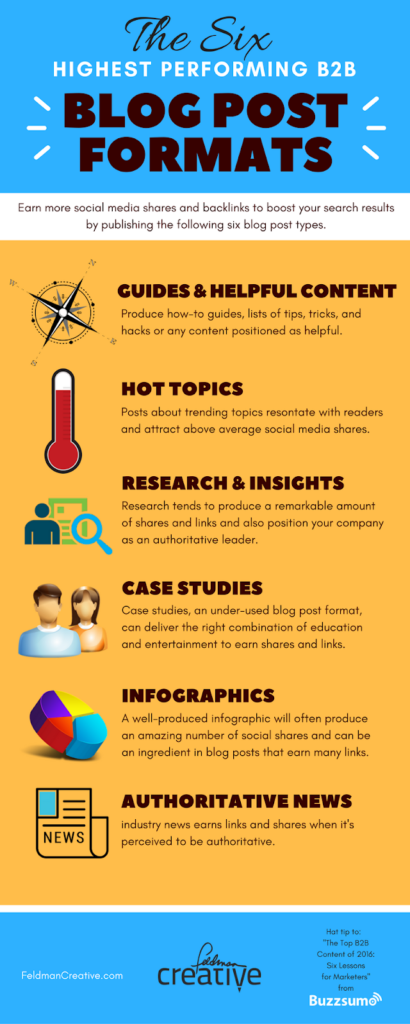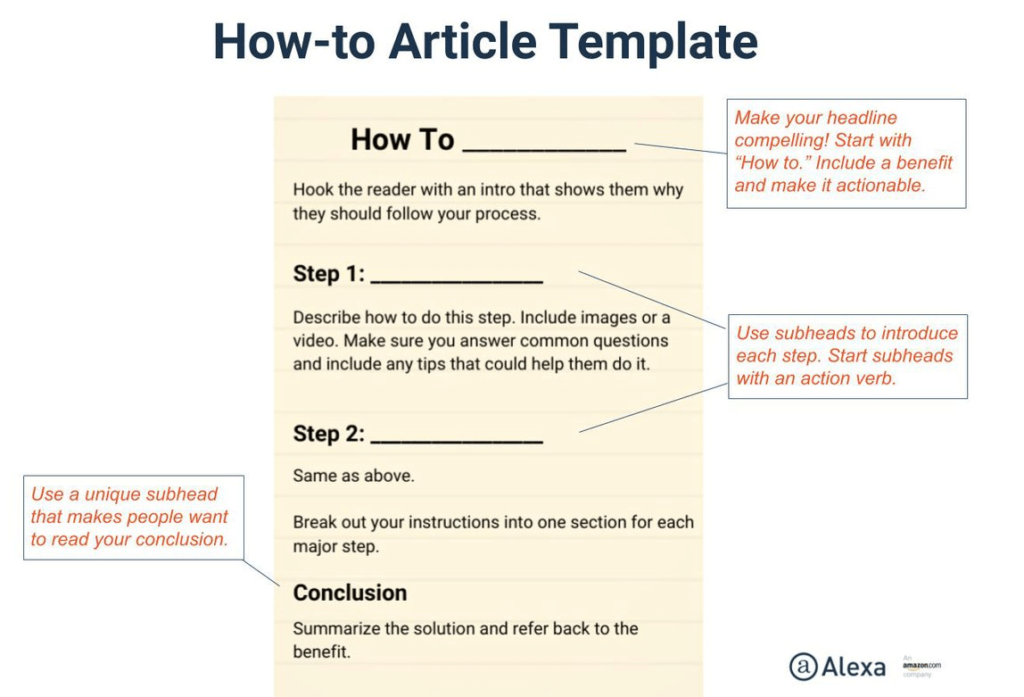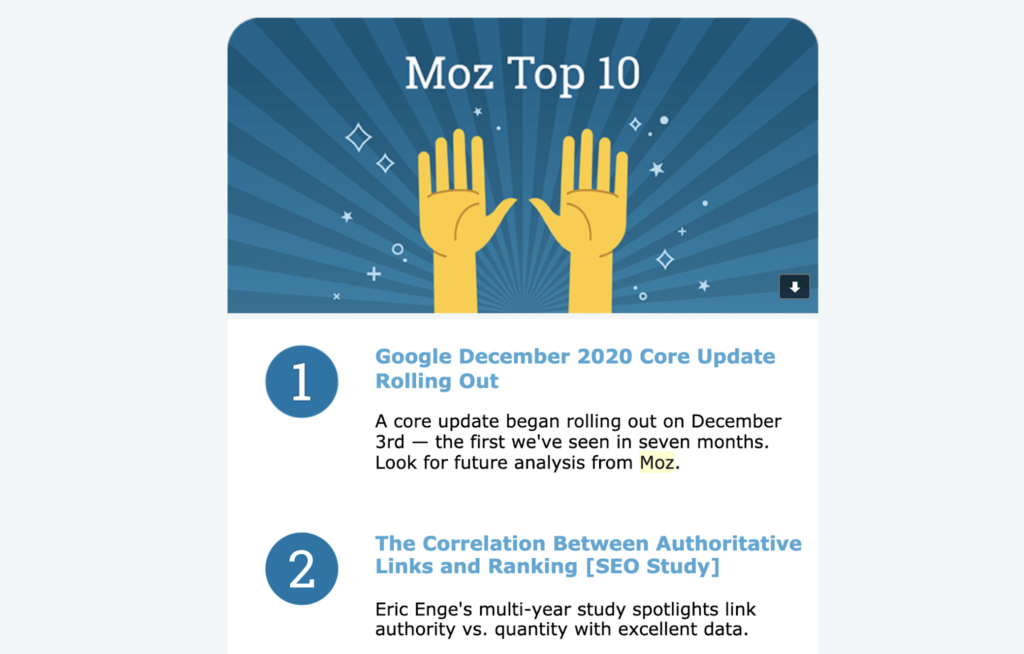Your Guide to Blog Formats and How to Choose the Best for You

Table of Contents
- How to Choose the Best Blog Format
- Blog Post Types and Formats
- Key Takeaways
- Conclusion
- FAQs
The main purpose of a blog format is to channel the designing and writing process. A blog format provides a guideline that you can use to ensure consistency and quality across your articles and graphics. All blog owners should have a blog format for their content, especially when starting out.
After all, no matter how well-written your content is, not everyone is going to read it word by word. Most people will only skim through it. And that’s why you need a format so that readers can grasp the most important points even when they casually go through the content.
A suitable format can do wonders for your blog. It not only optimizes your blog posts for SEO but also improves your conversion rates.
Blog formats are also useful for ensuring consistency in design and writing when you hire new writers. Your editorial staff, guest bloggers, and freelance writers—all need to understand what exactly you are expecting from them. A blog format makes your and their jobs easier. After you have begun working together, you can simply send the format to your new collaborators and create quality content.

How to Choose the Best Blog Format
Choosing a format for a blog is easy, right? Wrong! There are two significant problems that bloggers face in this respect—first, an abundance of options. Yes, there are many options when it comes to selecting the blog post format, such that some amount of confusion is inevitable. The other issue is rigidity in choice.
Maybe you are a master at how-to posts. Or perhaps you do the list format better. Whatever it is, just because you have a signature format doesn’t mean it will be appropriate for every blog post you create. Choose a format that goes with your content’s subject or narrative. Keep in mind that it’s alright to split a blog post into more than one format.
It is important to realize that not all blog posts are created equal. Different types of blogs demand different blog formats. Some formats work better for specific ideas than others. It all comes down to how you approach a topic. Sometimes, the angle you pick for a blog also determines its format.
So yes, selecting a blog post format is a tough job that you must do without excuses. It’s okay! We are here to help. Below, we discuss the most popular types of blog formats, so you can decide which one is ideal for your blog.
Blog Post Types and Formats

1. The how-to post

A how-to post is a step-by-step guide to show readers how to do something. This is one of the most popular blog format examples for business bloggers. It makes sense because how-to posts can be educational and useful for driving traffic from organic searches. How-to posts are generally used when a blog topic involves educating the audience on accomplishing something that they might not be familiar with.
Supportive visual components can strengthen how-to posts for better-understood concepts with visual explanations—for example, an instructional video.
2. The listicle

A listicle is a list of similar content composed of items organized in a list format. A list post, also known as a “listicle,” is among the most popular blog format examples. Since list posts have a number in the headline, they are easy to identify. They’re also great for new bloggers, as they are pretty formulaic. Listicles are sometimes criticized for being low-quality. This is probably due to the sheer number of poor list posts available online. But then, listicles can be highly engaging when executed well.
List posts are great for posting tips, tricks, or other ideas related to a topic. And they produce high-quality content. What more? People just love them!
3. The curated post

A curated post curates and highlights external content concerning a particular idea. A blog post featuring a list of TED Talks with embedded videos can be a great example of curated posts. This blog post format has been unfairly criticized as being unoriginal and lazy. Despite all of that, curated posts are highly popular and can be extremely helpful for readers. You need a lot of research to put together an excellent curated blog post. And with sound research, the final result can be a compilation of beneficial resources.
A curated post can be used to aggregate content, such as statistics, quotes, and videos. These posts also open up ways to build great relationships with all the bloggers and businesses highlighted in your curated content.
4. The thought leadership post

There are different blog formats with varying degrees of complexity, but the complexity of thought leadership posts is on another level. This post intends to stimulate thought with original data and opinions.
Thought leadership posts are one of the most challenging posts to write. They often consist of insights on current industry trends or forecasts about where the industry is heading based on hard data.
They are not the kind of posts you can write in a flash. They are often the result of a profound analysis of things you have noticed or been thinking about over some time. They can be controversial and speculative and can spark great discussions!
5. Fun post

We all love to laugh and be amazed. So, your blog’s content mix can also contain entertaining content, provided you don’t overdo it.
These types of posts can be published during holidays, the weekends, or any other time when your audience is tired, exhausted, and needs a break from routine intellectual stuff. But make sure your fun posts are relevant to your blog’s overall focus. This is the best blog format to entice readers, as the entertainment industry sells well.
Key Takeaways
- A blog format provides a guideline that you can use to ensure consistency and quality across your articles and graphics.
- You need a format for your blog so that readers can grasp the most important points, even if they casually run their eyes through the content.
- Blog formats optimize your blog posts for SEO and improve your conversion rates.
- The two problems bloggers face while choosing a blog format are the abundance of options and rigidity in choice.
- The best blog post types and formats are how-to posts, listicles, curated posts, etc.
Conclusion
Although we might not judge a book by its cover, we certainly judge a blog post by its format. It might be hard for you to digest this, especially if you are passionate about your posts, but this is the truth. But then you won’t have to feel discouraged. The above article on blog formats and when to use them can be your go-to guide for content creation. Follow the guide, and you will be able to entice readers and make them stick around.
Blog formats don’t just standardize your content but also make it easier to read. Using the right blog format for your posts can help transform your blog into an attractive publication.

FAQs
Although there are numerous blog formats, the most important ones are how-to posts, listicles, curated posts, thought leadership posts, and fun posts.
There is no single blog format that works for all kinds of blogs. Different types of blog subjects demand different formats. So, the best blog format is usually the one that goes with the topic of your blog.
Your blog should appear simple and neat. Have sufficient white space on the pages for improved readability. Remember, less is always more when it comes to blog design!
Blog formatting refers to the art of making the best ideas in content most apparent. You can create separate sections, change text elements, and splice pictures and media to get the reader’s attention to what is most important.
To select the right format for your blog, first, understand your audience. Next, ask yourself how you would like to convey your message. Understanding your readers’ needs and content demands is also imperative. Once all this is done, you are set to pick the right format for your blog.
Thought leadership posts are the most difficult to create. But then they are highly resourceful and can help your blog build an impressive online authority.
Latest Blogs
Learn how to rank on AI search engines like ChatGPT, Perplexity, and Gemini by optimizing your content for authority, structure, and relevance. Stay ahead in AI-driven search with this strategic guide.
Explore the best healthcare SEO services for your medical practice. Improve online visibility and effectively reach more patients in need of your services.
Discover top social media agencies specializing in banking solutions, enhancing financial services and driving engagement.
Get your hands on the latest news!
Similar Posts

Artificial Intelligence
5 mins read
Top AI Blog Writing Tools for Website Monetization

Blogging
10 mins read
How to Start a Successful Food Blog in 2022

Blogging
4 mins read